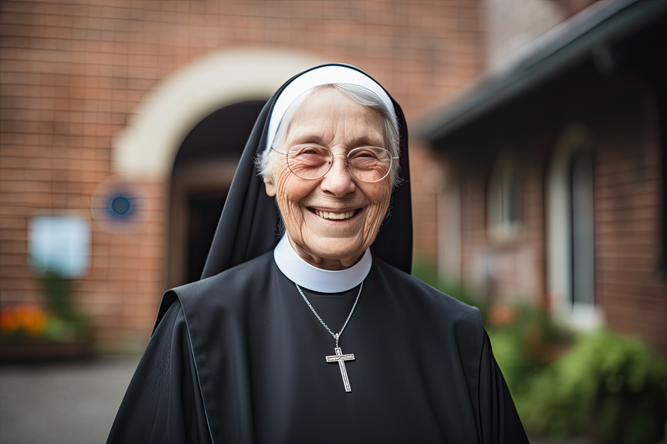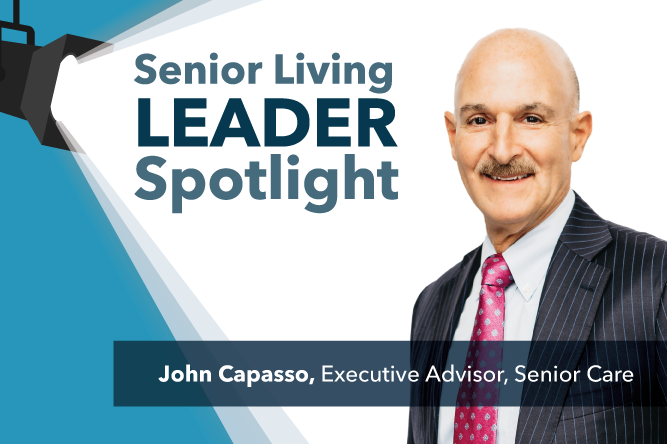
Catholic nuns and sisters have long been steadfast in firm commitment to their mission, their congregations, and their communities. From founding schools to establishing hospitals, their contributions have been immense. However, as time has progressed, religious communities are now facing unprecedented challenges that threaten their sustainability and funding for retirement.
An Uncertain Future for Aging Religious
Despite a rich history and invaluable service, women religious communities are confronting a harsh reality: Their membership is declining. Of communities surveyed by the National Religious Retirement Office (NRRO) in 2023, 71 percent had a median age of 70 or older. This was true of just 7 percent of communities in 1985.[1]
Because women religious and men religious take vows of poverty when committing to their congregations, the congregations are responsible for funding their retirements. However, the shift in demographics has led to a looming retirement deficit of $9.9 billion by 2034.[2] According to a 2022 NRRO survey of hundreds of women and men religious communities, 317 of the 506 communities—63 percent—have 60 percent or less of the funds needed for retirement.[3]
Fewer Members, Increased Needs
The challenge posed by the dramatic decline in new members is compounded by the increasing need for assistance with daily activities among aging congregation members. Many of these members have lived together in convents or motherhouses for over 60 years, where the sense of community is a vital aspect of their lives. When assistance is needed in these communal settings, it often falls upon younger or more able members to provide support. Additionally, congregations may hire nurses, nursing assistants, and other caregivers to help care for members as they age. When caregivers are hired, the congregation then has to manage them, as well as the care that they deliver.
In this way, over time, these motherhouses may evolve into assisted living communities or even de facto nursing homes. (Despite this transition, state agencies regulating nursing homes often continue to classify these communities as convents, exempting them from licensing requirements.) For congregations whose primary ministries have been education or pastoral care, this shift can inadvertently turn them into healthcare providers.
Strategic Options for Aging Religious to Overcome These Challenges
Health Dimensions Group (HDG) has been privileged to work with both women and men religious communities to address these challenges. When we begin assisting these communities, we often find that there is no plan for retirement beyond setting aside some retirement funds. Most congregations don’t have a plan to address big-picture challenges; rather, they react to their circumstances. However, viable solutions are available.
Many women religious congregations have been savvy real estate investors over the years. The real estate on which their motherhouses and other properties are located have appreciated significantly and may now have considerable fair market value. Divestiture and monetization of these properties can contribute significantly to retirement shortfalls. However, there is still the challenge of finding alternative housing if the motherhouse is sold.
As community is central to congregational life, the idea of leaving the convent is understandably daunting to members. However, the sale of convents and properties can fund a better housing alternative. Often, senior living communities (SLCs) operate in close geographic proximity to motherhouses. Depending on a congregation’s level of retirement assets, entry fees and monthly services fees could be affordable for the members. For those congregations with lower retirement assets, there are SLCs that offer rental contracts for residents. There could be opportunities for congregations to retain a sense of community by living near one another in SLCs, or in some instances living together in multi-bedroom apartments. In addition to maintaining a sense of community, the sisters can find fulfillment with opportunities to continue to minister to lay residents in SLCs.
Many SLCs are still reeling from the pandemic, with low occupancies. This is an opportune time for congregations to approach SLCs with the prospect of a number of members moving into the SLC. There are several types of contracts for SLCs that require entry fees. Entry fee pricing is typically based on whether or not entry fees are refundable when the resident passes, and at a specific percentage. The value of entry fees is that most of them buy down the future cost of assisted living and nursing home care. Transitioning to SLCs offers a way to maintain community bonds while accessing necessary levels of care.
Additional Options
Affordable housing communities may be another option for women and men religious who have limited funds. Affordable housing is available in most markets where congregations are located. Monthly rental fees are determined based on resident income levels. The federal government subsidizes rent expenses based on resident income qualifications. Since women religious have no income, a significant portion of their rental expense is subsidized. As in SLCs, women religious could live in close proximity to one another, maintaining a sense of community. Ministering to lay residents is also an opportunity for the sisters in these communities.
Women and men religious could benefit greatly from access to and entry into a Program of All-Inclusive Care for the Elderly (PACE) organization. Older adults who are accepted into a PACE organization receive healthcare that is coordinated through the program. PACE-eligible older adults must meet the state’s criteria for the need to live in a nursing home. If the older adult can live safely at home, with the support of a spouse, family, or friend, they can become a PACE participant. They could continue to reside in an apartment or other congregate housing and benefit from PACE.
With many congregations facing these challenges, there could be significant benefits to congregations collaborating to develop retirement plans. Consolidating retirement assets between congregations could create economies of scale and synergies in financing and affording housing. There is also significant leverage that collaborating congregations can exert on SLC owners, managers, and others when negotiating SLC contracts.
What’s Next?
Many women and men religious communities will continue to be challenged as their median age rises and as they age in place. We’ve heard it expressed many times, by our women religious clients, that they have been so busy serving that they never thought about their own retirement.
The good news is there are creative solutions that can be deployed for congregations as they find their way forward into retirement. Familiarity with the charism and mission of congregations, financial understanding of unfunded retirement liabilities, and knowledge of senior living services are essential for providing qualified assistance.
HDG has assisted and advised women and men religious communities on these challenges with creative solutions. We would be happy to have a conversation about how we can serve your congregation. Contact us today at info@hdgi1.com or 763.537.5700 to speak with an experienced HDG consultant.
[1] NRRO, The Need, https://retiredreligious.org/the-need/#changing-demograph
[2] Mercer, Actuarial Projections for the National Religious Retirement Office, https://www.usccb.org/about/national-religious-retirement-office/upload/Mercer-Actuarial-Study.pdf
[3] NRRO, 2022 Annual Report Supplement, https://retiredreligious.org/wp-content/uploads/2023/08/rfr23_2022_supplement.pdf






